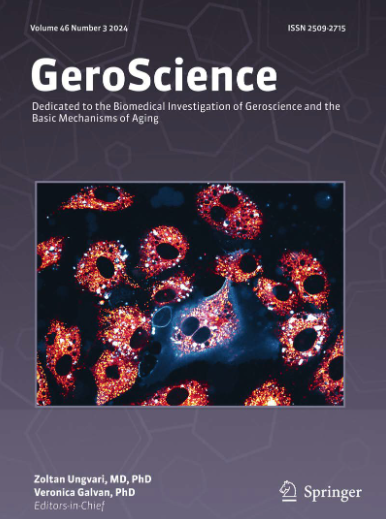免疫长寿:不寻常的裸鼹鼠免疫系统。
IF 5.4
2区 医学
Q1 GERIATRICS & GERONTOLOGY
引用次数: 0
摘要
裸鼹鼠(NMR, Heterocephalus glaber)无视Gompertzian的死亡率和年龄依赖性衰老规则,健康地活到第四个十年。核磁共振免疫系统可能通过防止感染、调节组织修复和根除肿瘤细胞来促进这种表型。与许多其他幼体特征保持一致,成年核磁共振在下颌下三角保留了功能性胸腺组织。尽管有这种额外的胸腺组织,围产期核磁共振胸腺的大小是小鼠胸腺的一半,但两个物种都表现出相似的胸腺退化轨迹。较小的胸腺可能表明胸腺细胞克隆类型的多样性较低,在作为功能性、自我耐受的T细胞释放之前需要完成选择。转录组学研究表明,与小鼠相比,核磁共振CD8 T细胞具有更大的髓淋巴比,缺乏自然杀伤细胞(NK),并且核磁共振CD8 T细胞的αβ克隆型多样性有限且小于CD4 T细胞。引人注目的是,核磁共振具有两个不同亚群的大量循环γδ T细胞;一个具有大量γ和δ TCR位点的多样性,另一个具有显性克隆型的细胞毒性T细胞亚群。总的来说,这些数据表明,生活在封闭环境中的核磁共振更多地依赖于先天免疫反应,并在宽松的病毒选择压力下进化。相反,他们选择了一种非典型的骨髓偏向模式的先天免疫监视和循环群体的细胞毒性γδ T细胞。总之,核磁共振似乎已经被优化,以提供更好的免疫监视、组织稳态和抗癌保护,而不是对不太可能的环境暴露于病毒病原体的保护。这些特征可能有助于延长他们的健康寿命和超常的寿命。本文章由计算机程序翻译,如有差异,请以英文原文为准。
Longevity through immunity: the unusual naked mole-rat immune system.
Naked mole-rats (NMR, Heterocephalus glaber) defy Gompertzian rules of mortality and age-dependent senescence to lead healthy lives well into their fourth decade. The NMR immune system likely contributes to this phenotype by protecting against infections, regulating tissue repair, and eradicating neoplastic cells. In keeping with their many other paedomorphic traits, adult NMRs retain functional thymic tissue in the submandibular triangle. Despite this additional thymic tissue, perinatal NMR thymi are half the size of mouse thymi, yet both species show similar thymic involution trajectories. Smaller thymi may indicate less diverse thymocyte clonotypes that need to complete selection before being released as functional, self-tolerant T cells. Transcriptomic studies revealed that when compared with mice, NMRs have a larger myeloid to lymphoid ratio, lack natural killer (NK) cells, and that the αβ clonotypic diversity of NMR CD8 T cells is limited and smaller than that of their CD4 T cells. NMRs, strikingly, have a large circulating population of γδ T cells with two distinct subsets; one with a large diversity of γ and δ TCR loci and the other, a cytotoxic T cell subset with a dominant clonotype. Collectively, these data suggest that NMRs, living in a sealed milieu, rely more upon the innate immune response and have evolved under relaxed viral selective pressure. Rather, they have selected for an atypical myeloid-biased mode of innate immune surveillance and circulating populations of cytotoxic γδ T cells. In summary, the NMR appears to have been optimized to provide better immunosurveillance, tissue homeostasis, and protection against cancer rather than protection against unlikely environmental exposure to viral pathogens. These features likely contribute to their prolonged healthspan and exceptional longevity.
求助全文
通过发布文献求助,成功后即可免费获取论文全文。
去求助
来源期刊

GeroScience
Medicine-Complementary and Alternative Medicine
CiteScore
10.50
自引率
5.40%
发文量
182
期刊介绍:
GeroScience is a bi-monthly, international, peer-reviewed journal that publishes articles related to research in the biology of aging and research on biomedical applications that impact aging. The scope of articles to be considered include evolutionary biology, biophysics, genetics, genomics, proteomics, molecular biology, cell biology, biochemistry, endocrinology, immunology, physiology, pharmacology, neuroscience, and psychology.
 求助内容:
求助内容: 应助结果提醒方式:
应助结果提醒方式:


